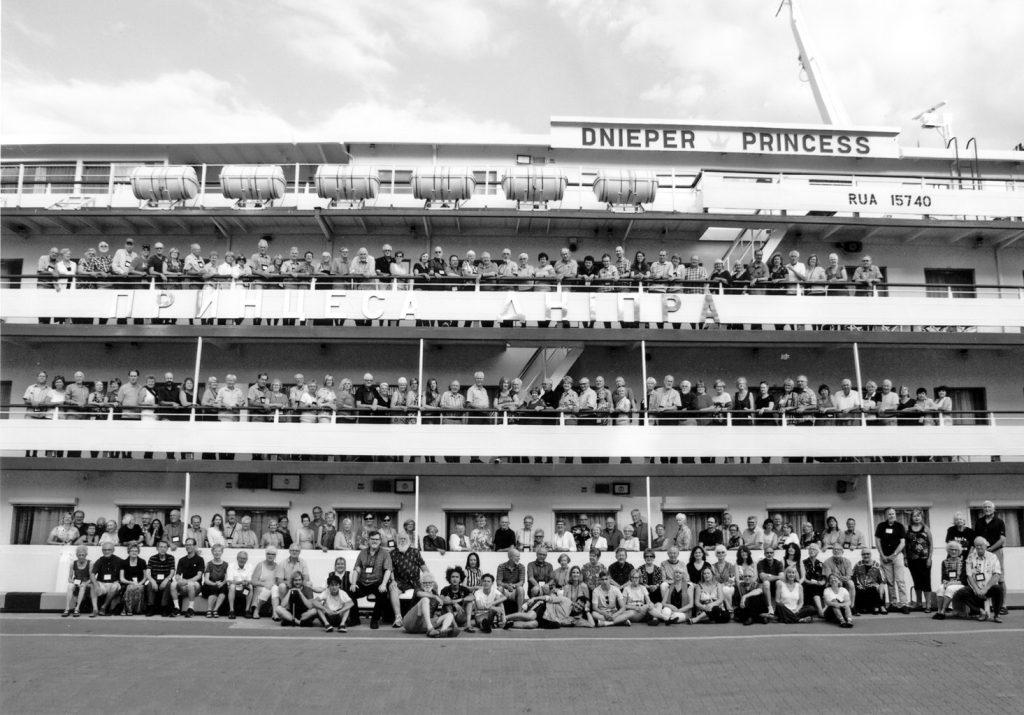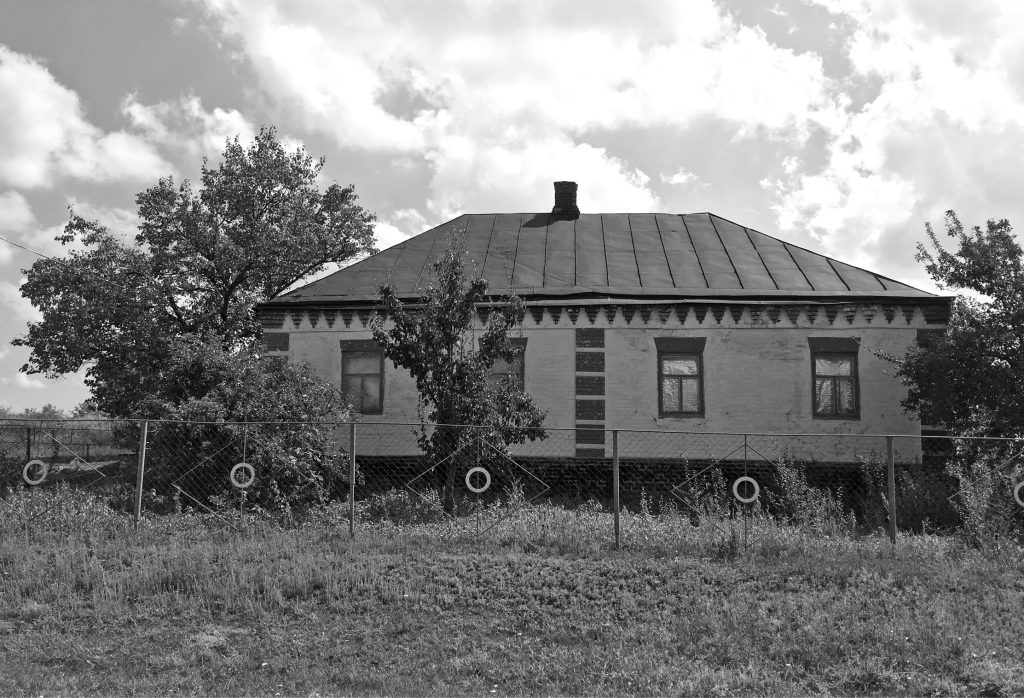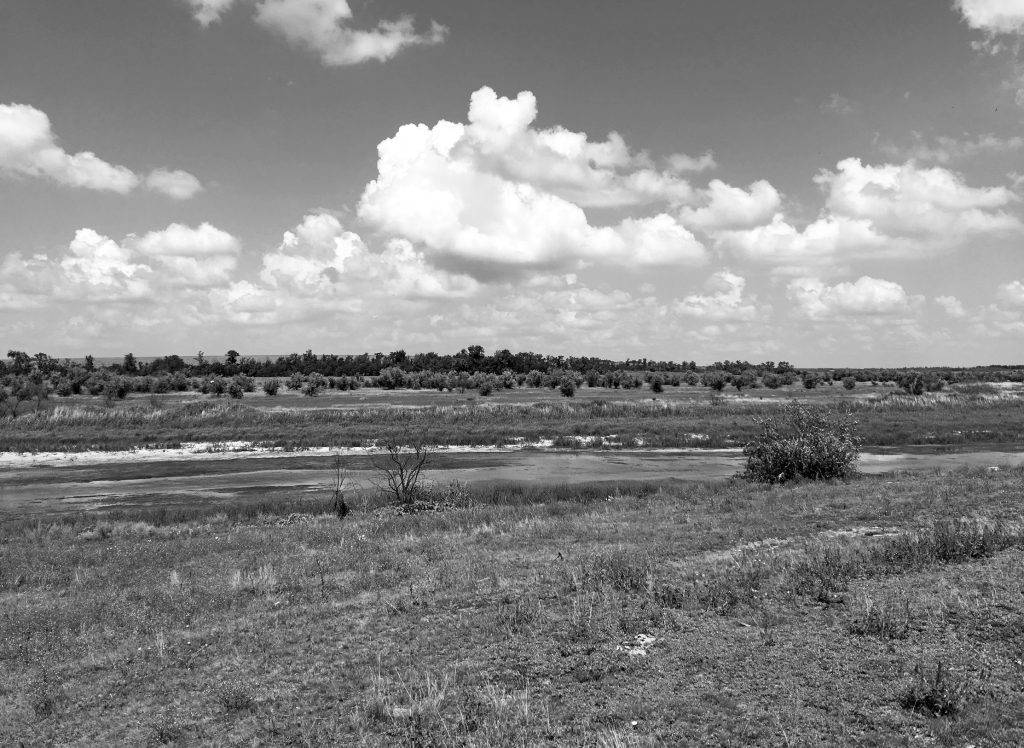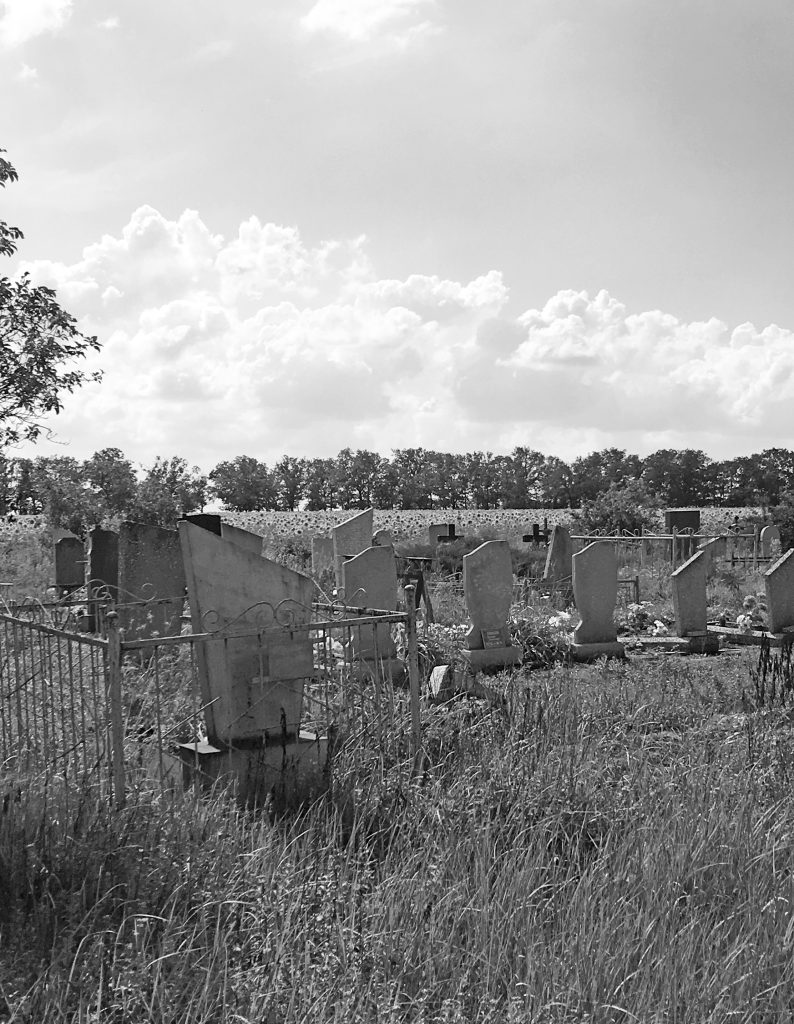Chasing Our Heritage in Borozenko
Grace Dueck
This past summer, I had the privilege of boarding a ship with 190 passengers, all on a quest to visit the scenes which formed part of their heritage, the Mennonite colonies in Ukraine. As I was preparing for the Mennonite Heritage Cruise organized by Walter and Marina Unger, which they lovingly dubbed the floating Mennonite University, I did not know what to expect.

All of the cruise participants were sent their Ahnentafel a few months in advance. An Ahnentafel is best described as an ‘ancestor table,’ a genealogical numbering system which lists a person’s direct ancestors in a fixed ascending sequence. My Ahnentafel traced my genealogy back to my thirteenth great-grandfather, Jakob Harnasveger, born between 1480 and 1500, in the Netherlands. Clearly my heritage is Dutch and having visited Friesland in the Netherlands, from where my people purportedly hailed, I had felt an enormous affinity to the landscape there, the people, and the foods they ate. Really! The only difference between their cow pastures and those at home on the Canadian prairies was that they were enclosed by canals, as opposed to our fences.
Visiting Ukraine, therefore, was not so much about visiting the place of my origin, as visiting one of the past homes of my people. Forever on a quest for religious freedom, military exemption, and other educational and lifestyle rights, Mennonites moved many times and that is how they ended up for a period of time in Ukraine. Here they adopted Ukrainian foods such as perogies, cabbage rolls, and Borscht. I find it fascinating that they even retained the Ukrainian names for these dishes. Perogies in Ukrainian are called Varenyky!
Most of the passengers on our cruise had relatives who had left Ukraine in either the 1920s or the 1940s. My people, however, left in 1874, before the wars and famines that were so devastating for the Mennonites who remained and that left so many deep scars. Hence, whereas many of the passengers were searching for lost records of relatives gone missing, for graves of those who had been massacred, or for buildings where their loved ones had lived and died, I was searching for happier sites. I was chasing villages where my great-grandfathers and great-grandmothers had been born.
My Ahnentafel pointed to Borozenko as the birthplace of several of my ancestors, as well as of several of my husband’s, Terry. We are both from the Kleine Gemeinde background and although I no longer strictly adhere to the tenets of this Mennonite group, I still do treasure their peace stance, their community mindedness, and their honest hard-working ways.
As early as 1860, Kleine Gemeinde members left the Molotschna Mennonite settlement to find farmland for their landless members and to distance themselves from the politics of the Molotschna colony. In 1865, the Borozenko colony, twenty miles northwest of Nikopol, was founded by 120 Kleine Gemeinde families. This is where two of my great-grandfathers were born, as well as one great-great-grandfather. My husband’s side of the family boasted three great-grandparents who had been born in Borozenko. We were both keen to visit this area, so we proceeded to book our own private tour, with the assistance of our cruise organizers.
While still at home, I had mapped out each of the six villages of interest on Google Maps. Of course, the current-day names of these villages are no longer Heuboden, Rosenfeld, Steinbach, Friedensfeld, Annafeld, and Blumenhof, so the search for these villages meant equating them with their present-day names. With the help of several resources and maps, I was able to piece together our journey. Unbelievably, Google Maps actually loaded in the remotest parts of Borozenko and although the navigation feature was disabled, we were able to clearly follow the path I had outlined for us while still at home. At times, our guide and our driver were uncertain about which way to take. I would reassure them that the road I pointed to would be the one, but they still needed to stop and ask the locals. Each time, the locals verified my directions!
It was gratifying to see my research come to life before my eyes. The villages were just as they had been on the satellite images I had zoomed in on while back home. Steinbach, which no longer exists but for a fruit grove across the Bazavluk River, was set in the bend of a stony river, just as the satellite image had shown. Stones in the middle of the river! Steinbach, which means “stony brook,” was the birthplace of Terry’s maternal grandmother’s father! As the day progressed, each village we visited came to life. Our Google Map research had laid the foundation for a day of discovery and memories.
It was delightful to meet the locals and to see their hunger for people from afar. Their stories, interpreted for us by our guide, were poignant and full of memories. It was as if they were bursting with untold information, and their friendliness and willingness to help was amazing. It is intriguing that despite our ancestors only spending nine years in the Borozenko region, we feel such a tremendous connection to it!
I have compiled a travelogue of the villages we visited, the names of relatives who were born there, and some snapshots of our day in Borozenko—walking through the grasses, breathing in the air, and feeling the land upon which our people walked.

In Heuboden, which was the birthplace of my great-grandfather, Cornelius P. Janzen, we saw an old schoolhouse built by Mennonites, now used as a home. It was built in 1898, after the Kleine Gemeinde left the region. This schoolhouse had a typical Johann Cornies roof. As we left Heuboden we found the cemetery, located east of the village, where the gravestones of Katarina Schellenberg and Helena Schellenberg were situated.
The villagers in Heuboden warned us of our next destination of Blumenhof. They told us that the farmers there had fierce dogs, meant to protect their cattle, and that we should be careful. We did come upon these dogs, but according to one local farmer, they were mellow and friendly during the day, and only became fierce at night. Still, having them come near, sniff our clothes, and check us out closely was a bit anxiety provoking! But Blumenhof was the birthplace of my great-great-grandfather, Peter R. Reimer.
Our next stop was Steinbach, Borozenko. This village was the birthplace of Terry’s maternal grandmother’s father, Johann W. Reimer (20 January 1870). The river was low when we visited, so the stones that would be typically underwater were exposed on the banks of the river, as shown in the photo.

Our tour then visited Rosenfeld, the birthplace of my great-grandfather, Johann F. Unger. In Rosenfeld we saw a number of houses built with the Flemish bond brick pattern common to most Mennonite buildings. We also saw an old well that our guide thought might have been built by bricks made by Mennonites, since they were much longer than present-day bricks.
Friedensfeld was the birthplace of Terry’s maternal grandmother’s mother, Maria T. Barkman. A local gentleman in Friedensfeld, working in his garden, jumped in our car with us and gave us a tour of the village! We visited the former Mennonite Brethren Church-School building, which has now been restored and is still in use. We also saw the site of the former flourmill, owned by a Friesen, Isaak, and Wiens, which has now been torn down. The only evidence that remains of the Friedensfeld flourmill was a few lone bricks.
On the periphery of many Orthodox graveyards one can find old tombstones of the Mennonites who had lived and died in Borozenko. Usually a Mennonite burial site can be identified by the lilac bushes that still thrive there today. From my readings, I have noted that lilacs held special significance for the Mennonites. Our guide told us that the Mennonites had always planted lilacs around their graves and it was heartwarming to see that they still blossomed there to this day. One blogger, commenting on the symbolism of lilacs among Mennonites, writes: “Today, despite the best efforts of Stalin and his Soviets to erase the memory of those quiet Anabaptist communities, plantings of lilacs remain as witnesses to our past.”1

Our time spent in Borozenko, enriched our spirits and deepened our roots and our sense of connection to our heritage. There was a sense of calm as we bounced along the bumpy roads, saw field upon field of sunflowers, felt the summer breezes, and touched the meadow grasses. Borozenko, you gave us life. Our hearts are grateful.
- Bruderthaler, “Neu Brüderthaler: Ethnic Russländer Mennonites,” June 23, 2010, http://bruderthaler.blogspot.com/2010/06/significance-of-lilacs.html. ↩︎
